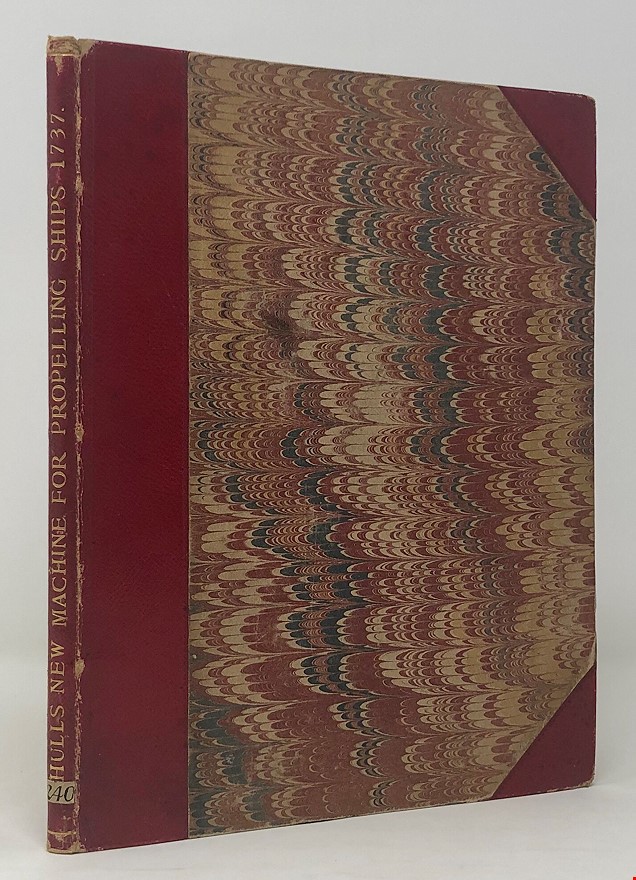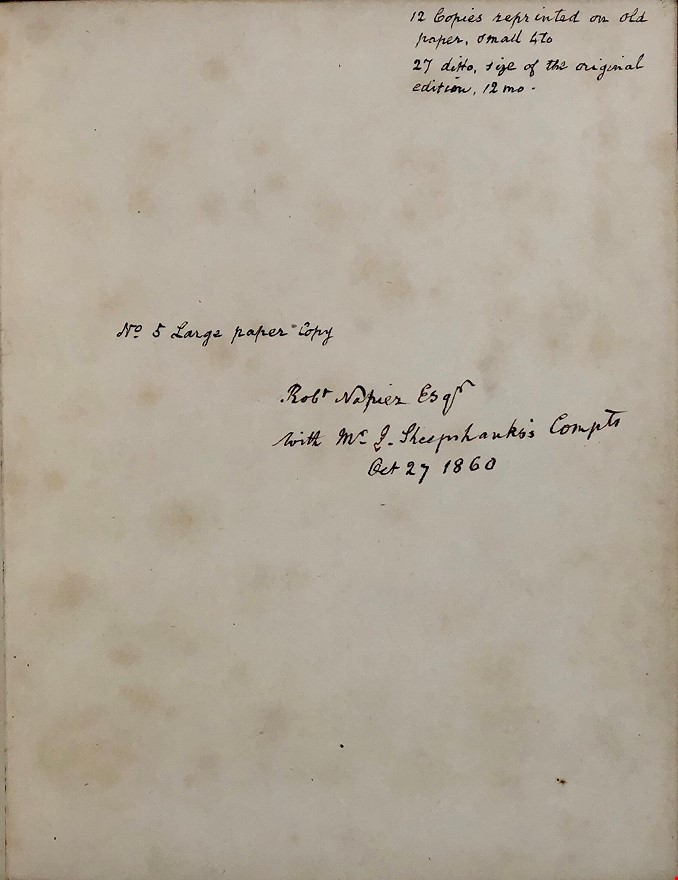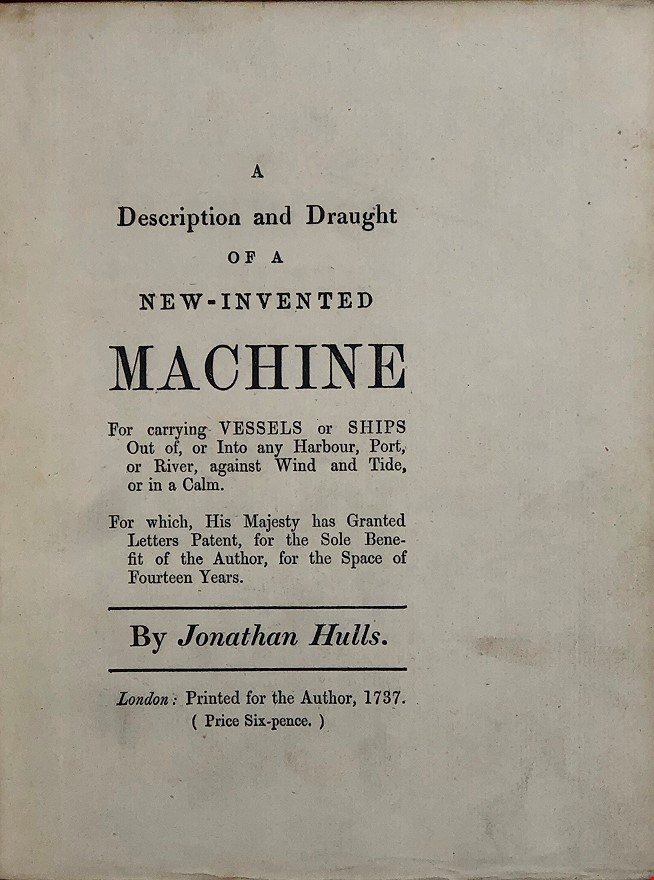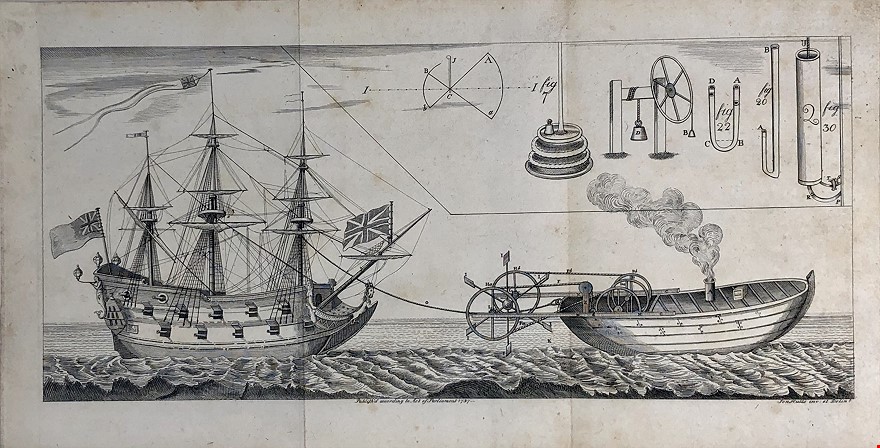A Description and a Draught of a New-Invented Machine
HULLS Jonathan ([1860])
£450.00
Please contact us in advance if you would like to view this book at our Curzon Street shop.
for carrying Vessels or Ships Out of, or Into any Harbour, Port, or River, against Wind and Tide, or in a Calm. For which, HIs Majesty has Granted Letters Patent, for the Sole Benefit of the Author, for the Space of Fourteen Years. Small 4to. Limited Edition Facsimile Reprint. Folding frontispiece. Light browning, otherwise very good in half red skiver on marbled boards by Rivière, a little rubbed at the extremities. 48pp. N.p. [?London], n.d.,
As explained in a MS note on the first blank this is one of a Limited Edition of thirty-nine copies, this being one of twelve Small 4to. on "old paper", the rest 12mo. "size of the original edition".
"Hulls is remembered principally for having patented the application of the atmospheric steam engine to marine propulsion. A communication from M. de Quet on mechanical propulsion of ships, published in 1734 in Volume VI of the Abridgement of Philosophical Transactions of the Royal Society, may have spurred Hulls to attempt to apply the Newcomen engine for this purpose. The means to do so eluded him until a neighbour at nearby Batsford Park, Mr. Freeman, contributed about £160 to finance a patent application, granted to Hulls on 21 December 1736. As was required by the grant, Hulls published within three months [the present work]. He proposed a stern-wheeled paddle towboat carrying a boiler coupled to a vertical steam cylinder. Atmospheric pressure depressed a piston towards the bottom of the cylinder when the steam beneath it was suddenly condensed. Through a linkage of ropes over pulleys, this movement turned an adjacent layshaft and simultaneously raised a counterweight, the subsequent descent of which reversed the rotation of the layshaft as fresh steam was admitted beneath the piston. Friction ratchets on the layshaft converted this alternating motion to continuous rotation of the adjacent paddle-shaft mounted on a framework over the stern. When the water was sufficiently shallow, Hulls proposed to employ a pair of mechanical quanting poles operated by the same alternating motion. No conclusive evidence has survived to substantiate the tradition that Hulls experimented with such a vessel on the Avon at Evesham. Had his pamphlet provoked serious trial of his scheme history would certainly have noted it, but the intermittent motion of the Newcomen engine made it fundamentally unsuitable for continuous propulsion, whether on land or water." [ODNB]
Inscribed beneath limitation note, "No.5 Large Paper Copy, Robt. Napier Esqr. with Mr. J. Sheepshanks's Compts. Oct. 27 1860". Napier's bookplate to the front pastedown, together with that of the Scott Collection, Scott Catalogue No. 238.
Sheepshanks is best remembered as a patron of British artists, forming a large collection commissioning works from such as Turner, Constable, Landseer, Roberts and Wilkie. He presented his collection to the nation in 1857. The highly suitable recipient, Robert Napier, was a marine engineer remembered as the "father of Clyde shipbuilding".
Stock Code: 89791







